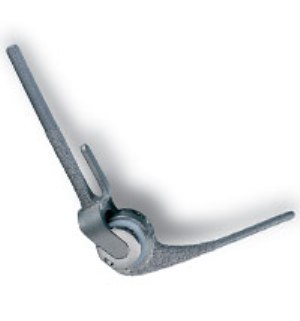INDICATIONS FOR OPERATION
Elbow joint arthritis causing pain which has not responded to conservative treatment
All surgical procedures have some element of risk attached.
Elbow joint arthritis causing pain which has not responded to conservative treatment
All surgical procedures have some element of risk attached.
All surgical procedures have some element of risk attached.
The risks outlined below are the most common or most significant that have been reported.
Sometimes it is not possible to relieve all the pain even if the operation has been performed technically well.
If an infection does occur it is usually superficial in the wounds and is easily treated with antibiotics. Infection around joint replacement is potentially very serious and hard to eradicate. In the worst case scenario the implant has to be removed and replaced after a period of several months on antibiotics.
The nerves which work the hand lie very close to the elbow and have to be moved out of the way during surgery. Some numbess may be experienced for a day or 2 post-op but usually settles. If the nerves are cut during surgery then there will be loss of hand function. If there are already symptoms of nerve damage prior to surgery there is unlikely to be improvement after surgery.
The elbow is usually very stiff before surgery and, whilst the operation will often improve the range of motion, there is no promise of improved motion. Occasionally the elbow can become more stiff after the surgery.
Over time, implanted joints may loosen. Developments are constantly being made to produce longer-lasting implanted joints, but this has not been perfected. If an implant loosens to the point where patients are having significant problems, a revision surgery may need to be performed (a replacement of a joint replacement).
The metal stems of the implant lie inside the bone and make that region very rigid. If you fall then stress is transferred to the adjacent (normal) bone and there is an increased risk of breaking the bone.
General Anaesthetic with an regional block (You will be fully asleep and a local anaesthetic injection into the side of the neck will numb the nerves to the elbow for post-operative pain relief)
Open
A 12 cm incision will be made over the back of the elbow
The triceps muscle (extends the elbow) will be cut and moved to one side. The end of the humerus (arm bone) will be shaped using a saw to receive the implant. The ulna (the bone which forms the tip of the elbow) will also be prepared to receive a new surface. The radial head will be excised.
The new elbow joint will be inserted and fixed into place using a special cement.
The tissues will be sewn back to their original positions.
A small vacuum drain may be inserted into the joint to allow any blood which collects after the operation to be removed.
The Biomet Discovery elbow replacement is illustrated below

A single long dissolving stitch under the skin and paper stitches over the top will be used to close the wound.
Elastoplast dressings will be placed over the top of the paper stitches and an adhesive bandage over the top of this. A plaster cast may be used for the first few days to keep the elbow straight.
You will wake up with a sling on the arm and your arm may feel numb for the rest of the day. There will be an IV line (a drip) in your other arm. A vacuum drain may be connected to your operated elbow.
You will need to remain in hospital until the drain is removed and you are comfortable.
A physiotherapist will see you and you will be given instructions on what to do next.